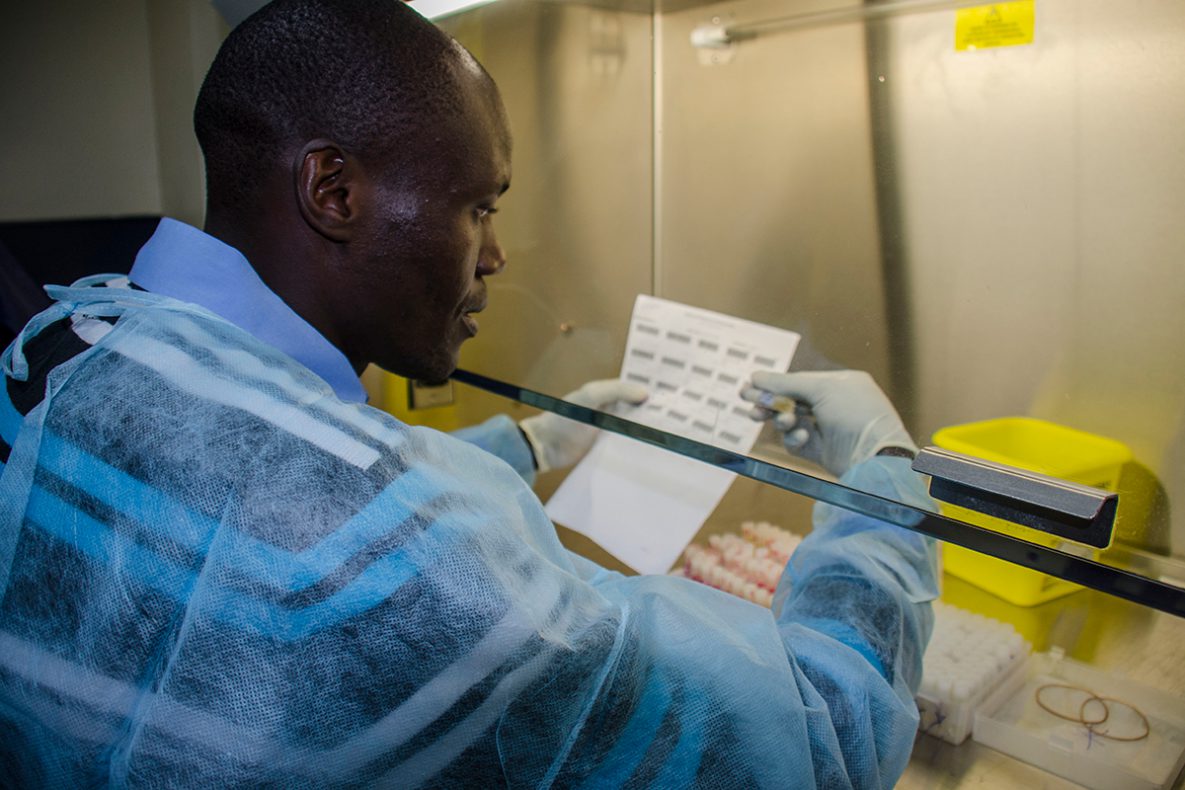Strengthening Laboratory Systems
CDC-Kenya’s work extends beyond our own laboratories. Through CDC staff’s technical expertise, CDC-Kenya supports the government of Kenya in building the critical laboratory network necessary to detect emerging infections and researches and evaluates state-of-the-art diagnostics in real world settings.

In Kenya and regionally, CDC Kenya works to strengthen laboratories and supports diagnostic capacity, appropriate specimen-handling, quality assurance systems, and adequate biosafety standards. CDC Kenya’s efforts with support from the considerable laboratory science expertise at CDC headquarters have led to improved laboratory capacity in Kenya and the region. These laboratory strengthening efforts are an essential component of ensuring global health security by identifying and controlling of diseases at their source.
CDC Kenya supports Kenya’s national laboratory system. With CDC support, the national Tuberculosis (TB) laboratory was upgraded to a Biosafety Level 3 laboratory and is now capable of conducting sophisticated TB diagnostics, including testing for drug resistance, and providing better support to sub-national laboratories which send samples for confirmation testing. As a result of improved laboratory systems in Kenya, patients are able to get their results, and if necessary treatment, quicker and receive better assurance that the results of their test is accurate
In 2015, Kenya’s MoH announced plans for a new National Public Health Institute (NPHI). CDC Kenya is providing technical support to build program capacity and has supported Kenya MoH staff participation in NPHI-related trainings and meetings to learn best practices from other NPHIs. The Kenya MoH also showcased a $9 million dollar investment in new public health reference laboratories and offices by the U.S. President’s Emergency Plan for AIDS Relief (PEPFAR), built with CDC Kenya’s management and technical expertise. Together these achievements are expected to assist Kenya in establishing sustainable, integrated public health systems that can address the country’s major health challenges.